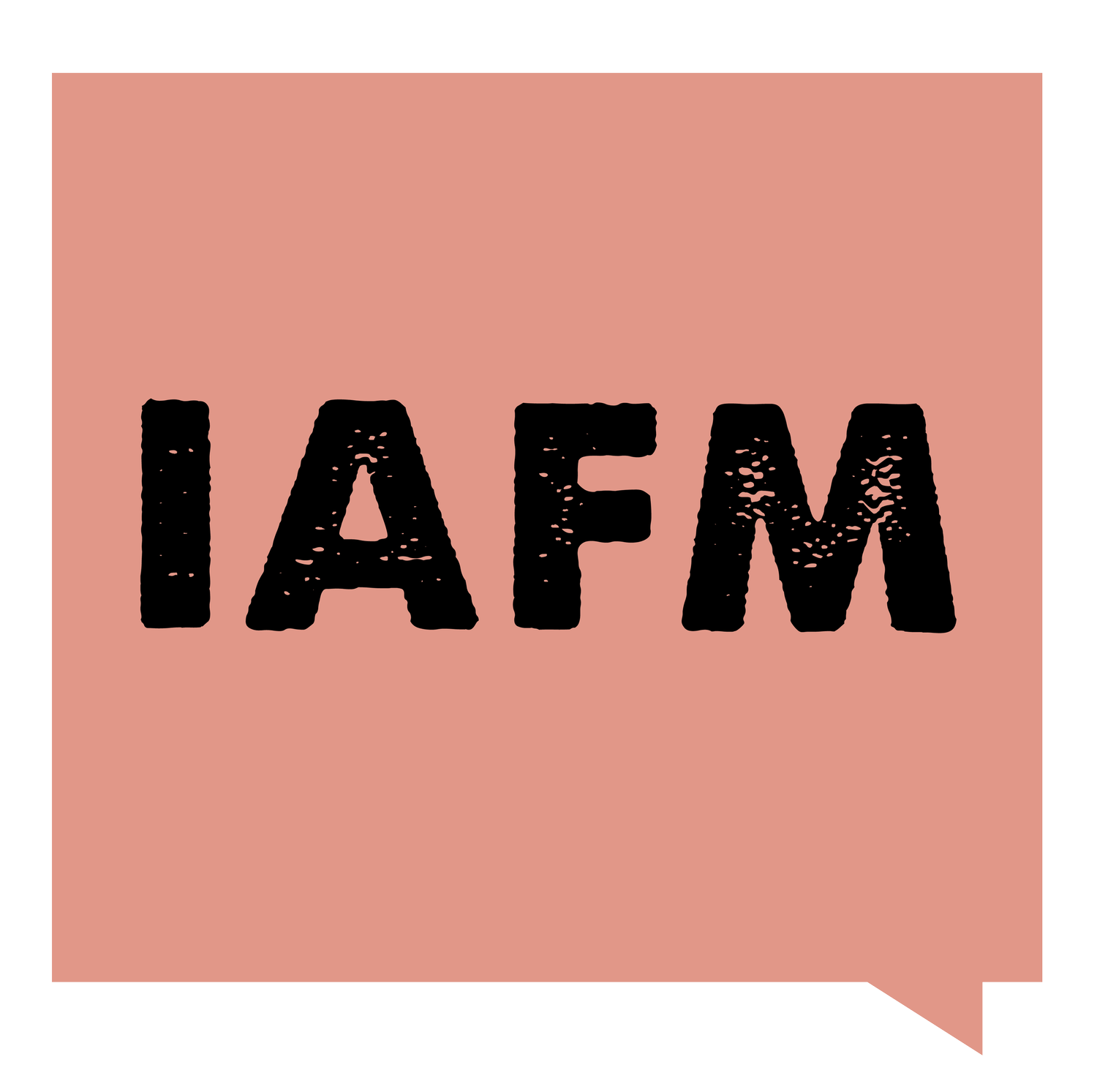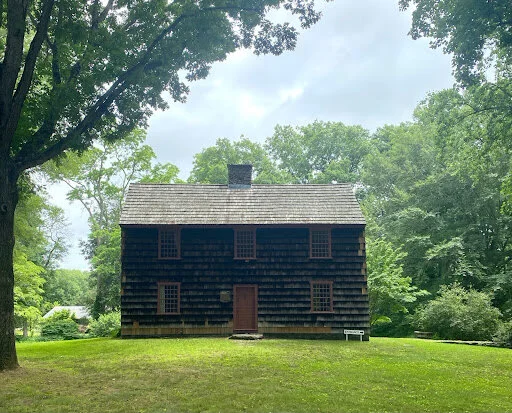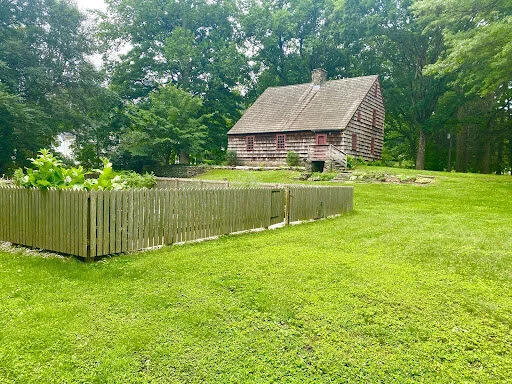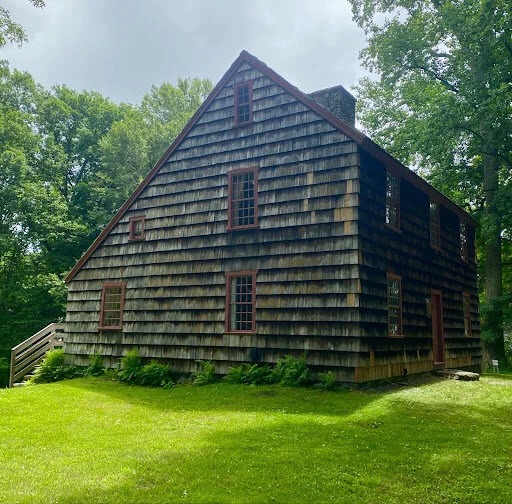the ogden house: A look at life in Fairfield 270 years ago
Sitting at 1520 Bronson Road and listed on the National Register of Historic Places, the Ogden House is a time capsule into life in Fairfield during 18th century Colonial America. Built in 1750 for David Ogden when he married Jane Sturges, the house serves as an educational experience for visitors to get a look at what every day was like for a Fairfield family 271 years ago.
Much of Fairfield’s Colonial history is affected by the Burning of Fairfield, which took place in 1790 as General Tryon’s British troops landed on Fairfield’s beaches from Long Island and set fire to much of the town. The Ogden House, however, was lucky enough to survive the torching, as we are lucky enough to have it today for education on the era.
The Ogden House as it sits today at 1520 Bronson Road in Fairfield
Photo cred: Aidan Casey
The Ogden House is a salt-box style Colonial home. The name “salt-box” originates from the wooden containers used to hold salt in Colonial times. According to Realtor.com, many salt-box homes started as symmetrical two-story houses, but as families got bigger, single-story additions were built on the back of the house, extending the long, sloping back roofline. This distinctive-looking design also had important benefits due to New England’s climate. When it snowed, it was easier for it to slide down the roof, instead of staying packed on and heavy, potentially causing damage.
Typical features of a Colonial salt-box home include narrow clapboard siding, symmetry, simple exteriors, and a large fireplace in the center - all features that the Ogden House wears proudly.
A large fireplace at the center of the house was a crucial part of Colonial living in America. This area was the heart of the home, as a fire not only warmed the entire building during the chilling New England winter, but also served as the spot for cooking, baking, and family gathering. According to fairfieldhistory.org , while the Ogden House has a large central fieldstone fireplace, the hearth also includes a reflector oven and a beehive oven, a design similar to a brick-oven, used for baking goods for extended periods of time, such as breads and pies.
Other features of the Ogden House give visitors a great idea of what life was like for the farming family, with miscellaneous household items such as silverware, pewter plates and bowls, a butter churn, cheese-press, spinning-wheel, and flax - an important crop in Fairfield at the time. Other features include a look into the children’s bedroom and master bedroom, giving a more intimate look at everyday life in Colonial times.
Certain items in the home reflect the wealth of the Ogden family. According to fairfieldhistory.org, since glass items were shipped from England during the 1700s, the three mirrors in the Ogden House tell us that the family had enough wealth to buy these items. Along with the mirrors are also a set of China, another luxury the Ogden’s had purchased during the time.
Whether you’re an elementary school student on a field-trip or an adult craving some new knowledge, the Ogden House is the perfect place for a look inside Colonial Fairfield history.
For more information on the Ogden House and tours, visit https://www.fairfieldhistory.org/visit/ogden-house/




